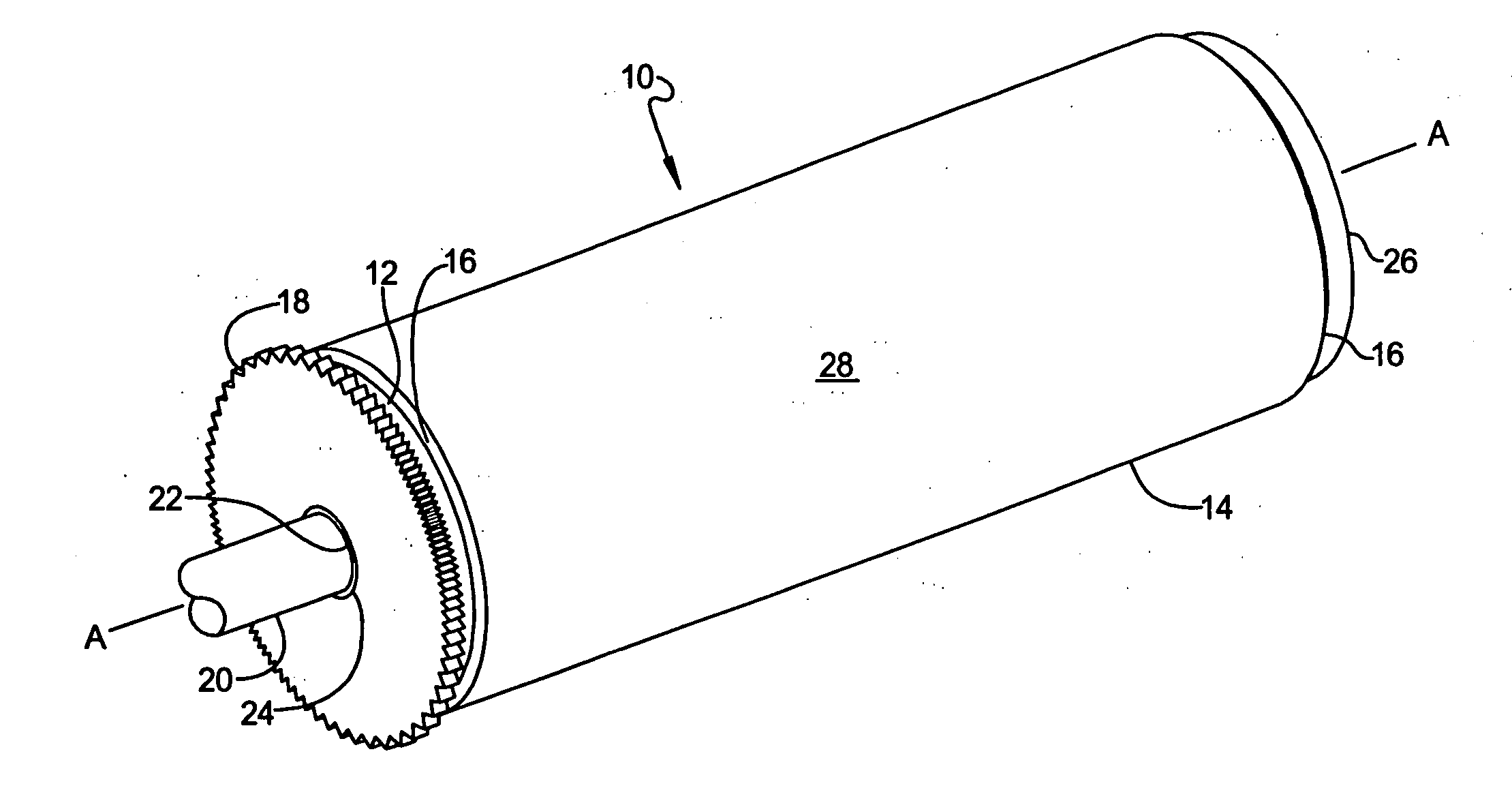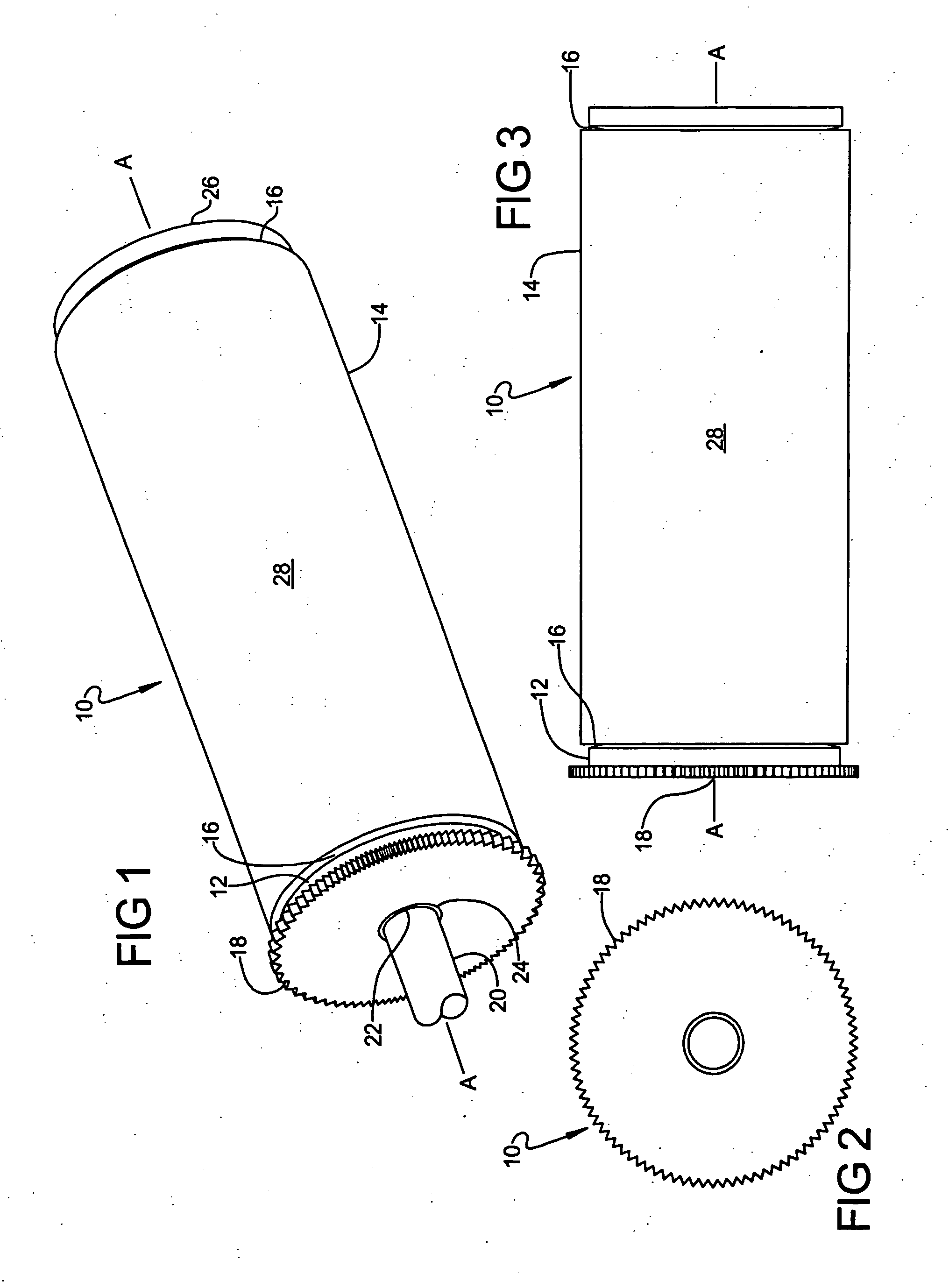Apparatus and method of enhancing printing press cylinders
a technology of printing press and cylinder, which is applied in the direction of printing press, rotary letterpress machine, printing, etc., can solve the problems of reducing the associated capital investment, damage or deformation of the underlying printing cylinder or print sleeve, and reducing the life of the cylinder, so as to achieve the effect of reducing energy and degrading print quality
- Summary
- Abstract
- Description
- Claims
- Application Information
AI Technical Summary
Benefits of technology
Problems solved by technology
Method used
Image
Examples
Embodiment Construction
[0022] The following description of the preferred embodiment is merely exemplary in nature and is in no way intended to limit the invention, its application, or uses.
[0023] Referring to FIGS. 1-3, a printing press cylinder, generally indicated at 10, is illustrated in accordance with the principles of the present invention. Printing press cylinder 10 of the present invention provides a number of distinct advantage over the prior art, such as, but not limited to, increased impression latitude, up to about 0.015″; increased production rates; reduced downtime; reduced setup time; reduced gear marking; reduced dot gain; reduced slur; and improved product consistency. These benefits, in addition to many others, are achieved through the novel construction of printing press cylinder 10. These benefits are particularly advantageous in the cost-constrained narrow web printing industry; however, these benefits are equally applicable to wide web printing applications. Therefore, the discussio...
PUM
 Login to View More
Login to View More Abstract
Description
Claims
Application Information
 Login to View More
Login to View More - R&D
- Intellectual Property
- Life Sciences
- Materials
- Tech Scout
- Unparalleled Data Quality
- Higher Quality Content
- 60% Fewer Hallucinations
Browse by: Latest US Patents, China's latest patents, Technical Efficacy Thesaurus, Application Domain, Technology Topic, Popular Technical Reports.
© 2025 PatSnap. All rights reserved.Legal|Privacy policy|Modern Slavery Act Transparency Statement|Sitemap|About US| Contact US: help@patsnap.com



